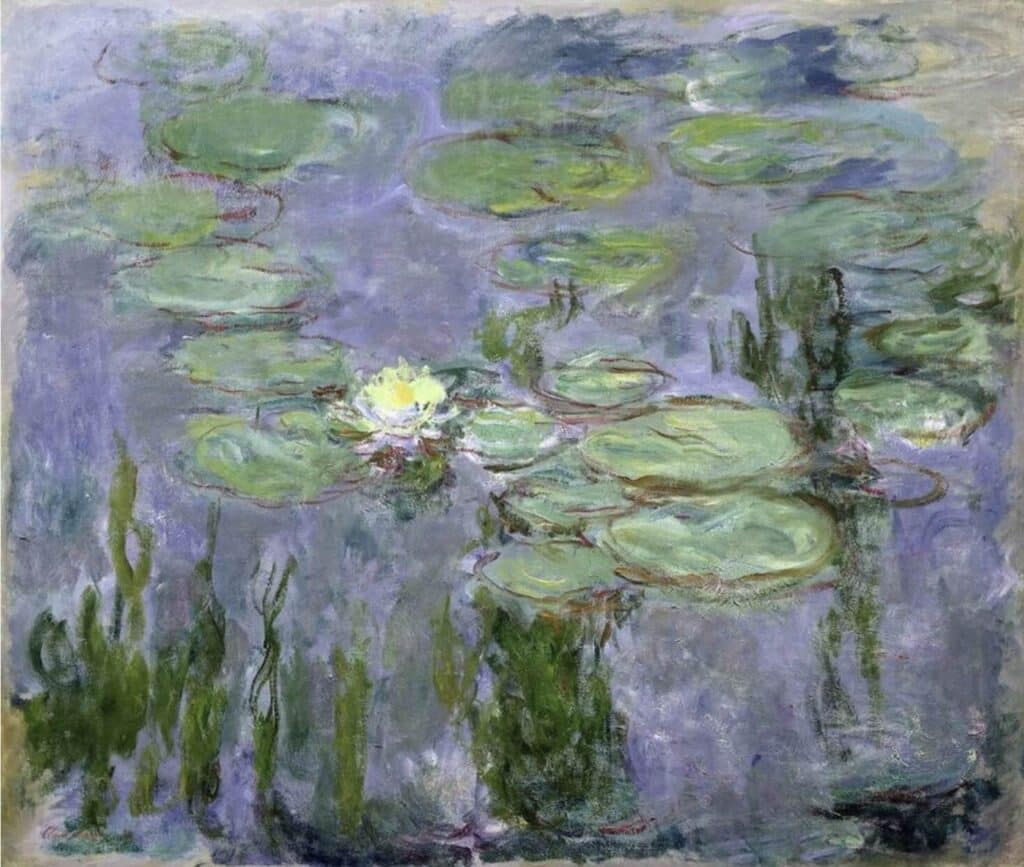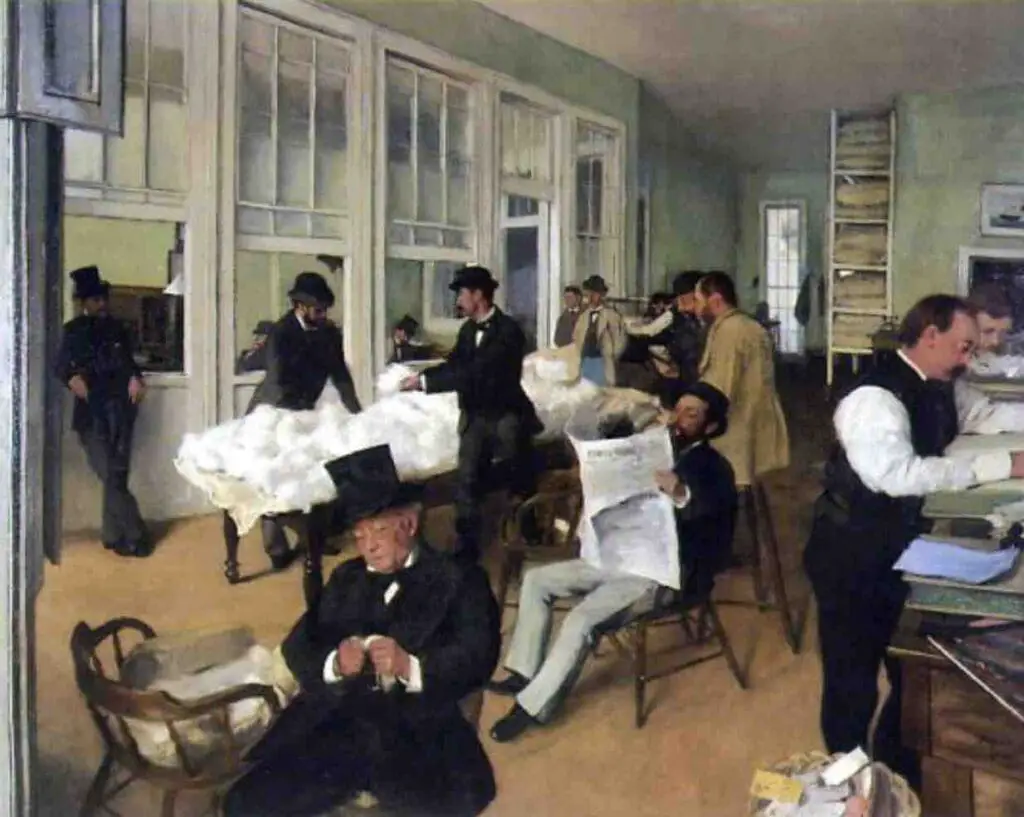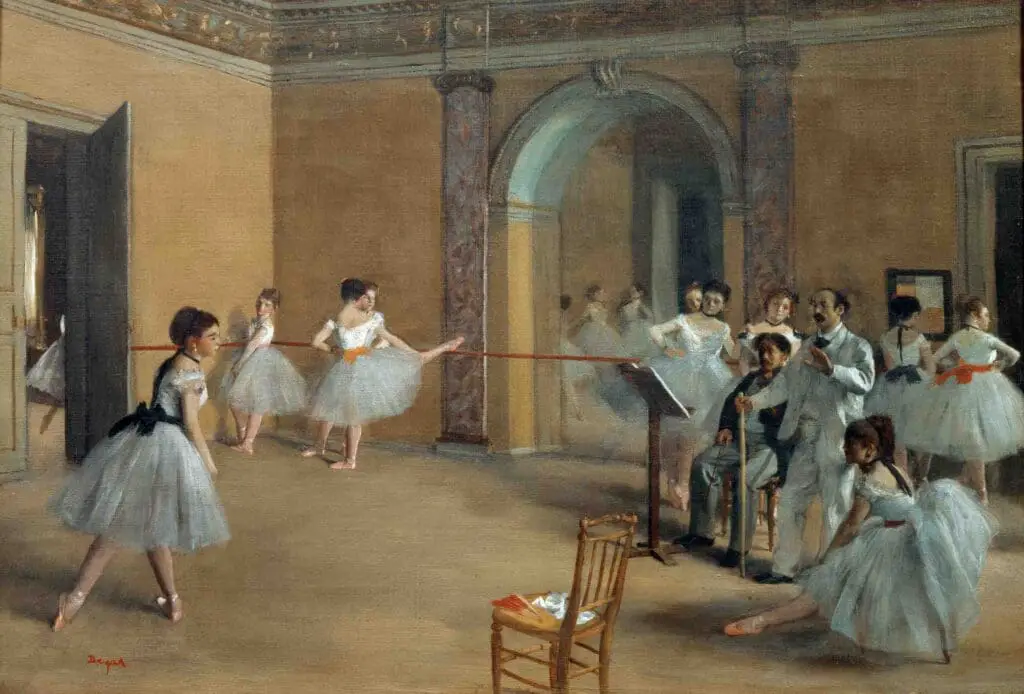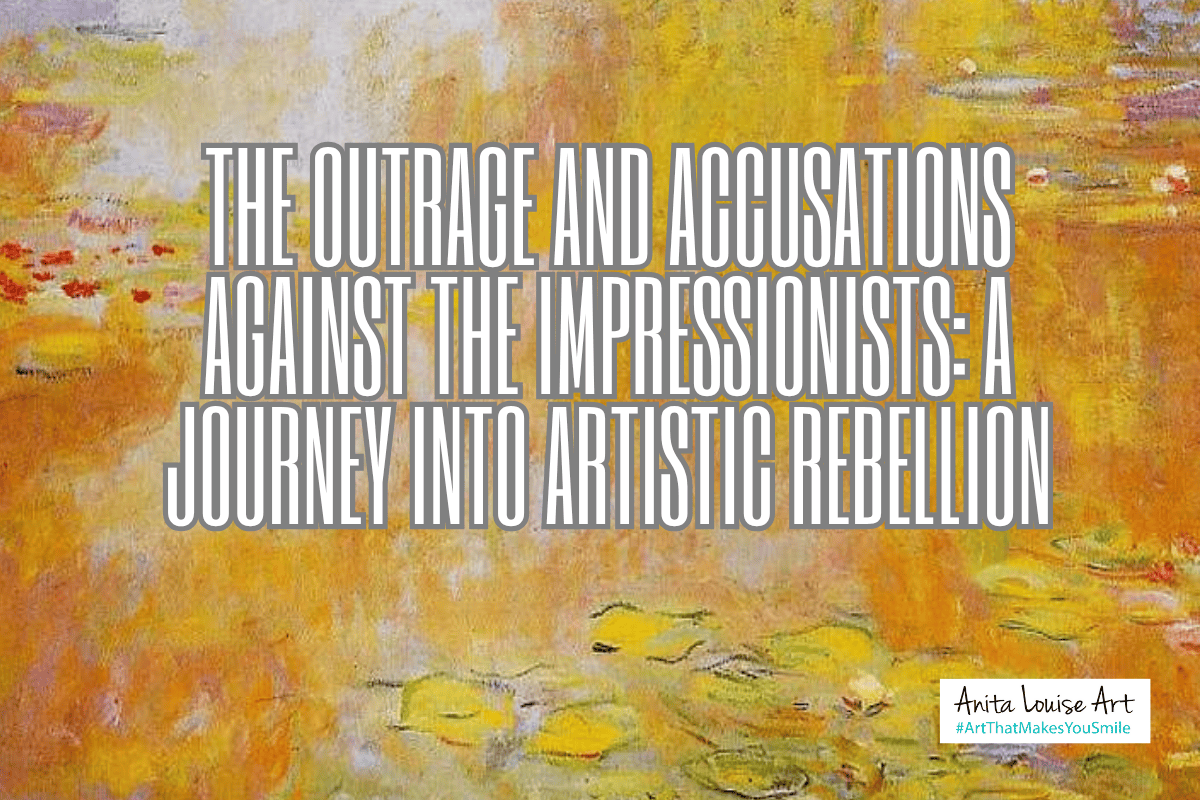Imagine an art movement so radical that it was accused of rebellion. Why did a few brushstrokes and vibrant colors spark such outrage in 19th-century Paris?
We’re diving deep into the untold story of how the Impressionists, far from being simply pretty pictures, threatened to dismantle the entire art establishment. Read on as we will explore the core reasons behind the backlash against the Impressionists, examining how their revolutionary techniques and subject matter shook the very foundations of the art world.
Table of Contents
- The Shock of the New: Why Critics Fumed
- Subject Matter Subversion: Painting Everyday Life
- The “Rebel” Label: More Than Just Aesthetics
- From Outrage to Influence: The Unforeseen Impact
- Beyond the Brushstrokes: A Lasting Lesson
- Deep Dive Podcast
- Related Questions
The Shock of the New: Why Critics Fumed
The Salon’s Iron Grip
In the 19th century, the Paris Salon was the ultimate arbiter of artistic success, dictating taste and careers. This official art establishment, backed by the Académie des Beaux-Arts, held a monopoly on what constituted “worthy” art.
Only works that conformed to its rigid standards were accepted, and rejection from the Salon often meant the end of an artist’s career. The Impressionists, however, were determined to break free from this oppressive control.
The Salon’s influence was pervasive, shaping public perception of art and maintaining a conservative approach that favored historical and mythological subjects.
Artists like Claude Monet, Edgar Degas, and Pierre-Auguste Renoir found themselves at odds with this establishment, eager to explore new artistic territories that reflected the changing world around them.

Technical Treachery
One of the most striking features of Impressionist painting was its “unfinished” look, characterized by visible brushstrokes and a lack of detailed refinement.
This technique was a direct challenge to centuries of academic polish that emphasized smooth surfaces and meticulous detail. Critics were horrified by the apparent lack of skill and the rejection of traditional techniques, branding the Impressionists as mere amateurs.
The Impressionists aimed to capture the fleeting effects of light and atmosphere rather than produce idealized representations. This approach not only defied established artistic norms but also questioned the very purpose of painting.
The critics’ outrage stemmed from their belief that art should reflect a perfected reality, and the Impressionists’ disinterest in this notion was seen as a betrayal of artistic integrity.
Color Chaos
Adding to the controversy was the Impressionists’ use of color. Their vibrant, non-traditional palette, particularly in the depiction of shadows, was viewed as an assault on classical harmony.
Instead of adhering to the established color theory that dictated the use of complementary colors for shadows, Impressionists employed unexpected hues, creating a sense of vibrancy and movement.
Critics argued that this radical approach undermined the beauty and balance that classical art represented. The Impressionists’ bold experimentation with color challenged the viewer’s expectations and forced them to reconsider the relationship between color, light, and form.
This disregard for traditional color theory became another focal point of criticism, as the art establishment struggled to accept such a radical departure from the norm.

Subject Matter Subversion: Painting Everyday Life
Ditching Gods and Grandeur
The Impressionists took a daring step by abandoning the grand themes of history and mythology that dominated the art world.
Instead, they chose to paint the everyday lives of ordinary people—laundresses, street scenes, and picnics became their subjects. This audacity to elevate mundane moments to the level of serious art was revolutionary.
By focusing on the lives of working-class individuals and the beauty of everyday experiences, the Impressionists challenged the hierarchy of subject matter that had long been established.
Their choice of subjects was not only a reflection of the changing social landscape but also a direct affront to the elitism that characterized the Salon. Critics were appalled that such trivial scenes could be deemed worthy of artistic representation.
The Mundane Made Monumental
Impressionists transformed the mundane into the monumental, capturing fleeting moments with a sense of immediacy and intimacy. Their paintings celebrated the beauty of ordinary life, revealing the extraordinary within the commonplace.
This shift in focus challenged the notion that art should only depict grand narratives, forcing viewers to reconsider what constituted “worthy” subject matter.
By elevating everyday scenes to the realm of fine art, the Impressionists democratized the artistic experience. They invited viewers to find beauty in their own lives, fostering a deeper connection between art and the human experience.
However, this radical redefinition of subject matter further fueled the outrage from critics who clung to traditional standards.

Personal Perspective vs. Universal Truth
Another significant aspect of Impressionism was its emphasis on individual perception rather than objective reality. The Impressionists sought to convey their unique experiences and emotions, capturing the essence of a moment rather than a detailed representation.
This focus on personal perspective challenged the purpose of art itself, as it shifted away from the idea of conveying universal truths.
Critics argued that this subjective approach undermined the role of art as a means of communication and reflection on societal values. The Impressionists’ insistence on portraying their personal interpretations of the world was seen as a departure from the established norms that emphasized collective understanding and moral instruction.
The “Rebel” Label: More Than Just Aesthetics
Anti-Establishment Sentiment
The Impressionists’ independent exhibitions were a direct affront to the Salon’s authority and control. Frustrated by their consistent rejection from the official exhibitions, they organized their own shows, allowing them to showcase their work on their terms.
This defiance of the establishment was perceived as an act of rebellion, positioning them as the “rebels” of the art world.
Their independence and willingness to challenge the status quo resonated with a broader anti-establishment sentiment that was growing in France during this period. The Impressionists became symbols of artistic freedom, embodying the spirit of innovation and resistance against oppressive traditions.

Social Anxiety and Change
The rapidly industrializing world of the 19th century brought about significant social changes, and the Impressionists’ art mirrored the unsettling pace of modern life. As cities expanded and traditional ways of living were disrupted, their paintings reflected the anxieties and complexities of contemporary existence.
Critics, however, often viewed this portrayal of modernity as a threat to established values.
The Impressionists’ focus on urban scenes and the lives of ordinary people highlighted the tensions and uncertainties of a changing society. Their work served as a visual commentary on the impact of industrialization, prompting critics to perceive them as agents of social upheaval rather than mere artists.
Political Parallels
In post-Commune France, any deviation from tradition could be interpreted as a revolutionary act. The political climate of the time influenced the reception of Impressionist art, as critics viewed their work through the lens of social and political upheaval.
The Impressionists’ rejection of established norms was seen as a challenge to the status quo, further fueling the perception of them as rebels.
Their art was often associated with the radical changes occurring in society, and critics were quick to label them as subversive forces.
This political parallel added another layer of complexity to the outrage directed at the Impressionists, as their work was seen as both an artistic and a social rebellion.
From Outrage to Influence: The Unforeseen Impact
Paving the Way for Modernism
Despite the initial backlash, the Impressionists’ radical break from tradition paved the way for subsequent artistic movements.
Their willingness to challenge conventions and explore new techniques opened doors for modernism, influencing generations of artists who followed. The legacy of the Impressionists can be seen in the works of later movements, including Post-Impressionism, Fauvism, and even Abstract Expressionism.
By pushing the boundaries of what art could be, the Impressionists set the stage for a broader exploration of artistic expression. Their impact on the trajectory of art history cannot be overstated, as they laid the groundwork for the innovations that would define modern art.
The Birth of the Avant-Garde
The Impressionists’ independent spirit fostered a new model for artistic innovation and challenge. Their rejection of traditional exhibition practices and their commitment to showcasing their work on their terms inspired future generations of artists to embrace the avant-garde ethos.
This shift in artistic practice encouraged experimentation and the exploration of new ideas, leading to the emergence of movements that would further disrupt the art world.
The avant-garde became synonymous with rebellion, as artists sought to challenge established norms and redefine the boundaries of art. The Impressionists’ influence on this movement is evident in the works of artists who followed, as they continued to push the envelope of artistic expression.
Legacy of Liberation
The fight for artistic freedom championed by the Impressionists continues to inspire artists today. Their struggle against the constraints of tradition serves as a reminder of the power of innovation and the importance of challenging norms.
The legacy of the Impressionists is not only seen in their artworks but also in the ongoing dialogue about the role of art in society.
Contemporary artists draw inspiration from the Impressionists’ defiance, using their platforms to address social issues, explore new techniques, and challenge conventional ideas of beauty. The spirit of rebellion that characterized the Impressionist movement lives on, reminding us that true innovation often faces initial resistance and ridicule.

Beyond the Brushstrokes: A Lasting Lesson
The Power of Challenging Norms
The journey of the Impressionists teaches us that challenging norms is essential for artistic and cultural progress. Their initial outrage and accusations of rebellion highlight the resistance that often accompanies innovation.
By pushing boundaries and defying expectations, the Impressionists transformed the art world and paved the way for future generations.
The Enduring Appeal of Rebellion
We continue to be fascinated by artists who dare to defy conventions and challenge the status quo. The allure of rebellion resonates with our desire for authenticity and the pursuit of new ideas.
As we navigate a rapidly changing world, the lessons learned from the Impressionists remind us of the importance of embracing creativity and questioning established norms.
Your Turn
What art today do you think challenges the status quo, and why? Share your thoughts in the comments! As we reflect on the legacy of the Impressionists, let us celebrate the power of artistic rebellion and its ability to inspire change and innovation in our own time.
The Impressionists’ journey from outrage to influence is a testament to the transformative power of art. Their revolutionary techniques and subject matter challenged the very foundations of the art world, forcing critics and audiences alike to reconsider their definitions of beauty and artistic value. As we explore the core reasons behind the accusations leveled against the Impressionists, we uncover a rich narrative of rebellion, innovation, and the enduring impact of art on society. The legacy of the Impressionists continues to inspire artists and provoke thought, reminding us that true creativity often flourishes in the face of adversity.
Deep Dive Podcast
To learn more listen to our Deep Dive Podcast.
Anita Louise Art is dedicated to art education, great artists, and inspiring others to find and create their art. We love art that uplifts and inspires. #ArtToMakeYouSmile! #ArtToMakeYouHappy!
If you are interested to see any of my art, you can find out more by clicking here. If you are interested in what inspires me and my paintings, you can discover more by clicking here.
We have a free newsletter and would love you to be part of our community; you can subscribe to the newsletter by clicking here. If you have any questions, I would be happy to talk to you anytime. You can reach me, Anita, by clicking here.
Subscribe to our Anita Louise Art YouTube Channel with great videos and information by clicking here.
Join us for our podcast “5 Minutes With Art.”Spend 5 minutes a week with us to discover and learn about great art and artists. You can find out more about our podcast by clicking here.
Related Questions
Why Was Impressionism Art At First Rejected?
During the emergence of impressionism art, fine-art oil painting was an essential addition to the interior design of a home, especially for the affluent and the increasing arrival of the middle classes. For these art patrons, only some art styles were considered acceptable for them to use for the interior design of their home, and impressionism art did not fit into any of these culturally acceptable fine art categories.
By clicking here, you can learn more by reading Why Was Impressionism Art at First Rejected?.
Why Is Van Gogh Considered Such A Great Artist?
Many things make Vincent Van Gogh unique and great as an artist. He had a great way to use color in his art, but more than that, he was an artist who set and paved the way for other artists. He changed art with his brushstroke technique, how he used color, and his design abilities. Van Gogh did all this as a self-taught artist.
By clicking here, you can learn more by reading Why Is Van Gogh Considered Such A Great Artist?.
What Art Tools Did Vincent Van Gogh Use?
Vincent Van Gogh used most of the essential tools that artists of his day used, such as oil paints, turpentine, oil, canvas, brushes, palette knife, and easel. We learn from some of his letters how he used these art tools for his paintings. We also know from the letters how essential these art tools were to him.
By clicking here, you can learn more by reading What Art Tools Did Vincent Van Gogh Use?.

